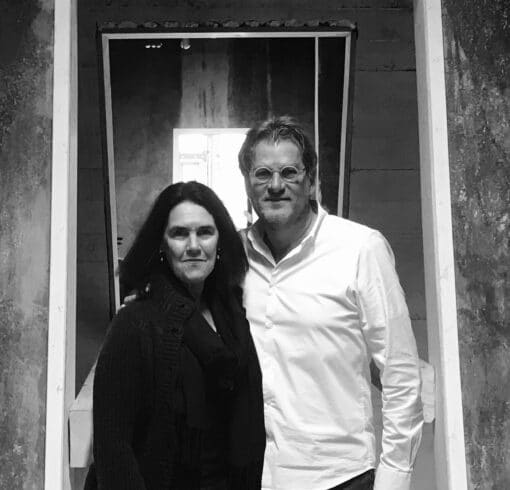Make Space for Nature
Dear Sir Attenborough,
Dear Ms. Thunberg…
1. Dear Sir Attenborough, Dear Ms. Thunberg,
We share your concerns, of course we do! But your proposed solutions fall significantly short. Our issue goes beyond curbing CO2 emissions from fossil fuels. The problem is that the Earth is out of balance. In the early fifties of the last century, we were 2.5 billion people. By 1990, we reached 5 billion, and by 2050, we’ll be 10 billion. More people consistently meant more agricultural land and more concrete and bricks at the cost of nature. We need a Global Makeover. The concept for a solution is quite simple. As we increasingly live in cities, we use vertical farming to relocate agriculture there. We then return the freed-up agricultural land to nature. Is this affordable? Is it sustainable? Does it not consume too much energy? Well, in fact it’s very feasible! Let us explain further.
2. Global Solutions: Think Global, Act Local
Think globally, act locally. We are all familiar with the calculations that demonstrate that reducing the CO2 emissions of an individual country has a minimal effect on a global scale. In practice, we are only willing to invest in reducing CO2 emissions if other countries do so as well. This approach lacks ownership; one country does more than another. A single country might want to be the best in class, but unfortunately, this approach isn’t fully embraced. Moreover, the trade in CO2 emission rights has become a profit model, and sustainability is a devalued marketing term. However, the concept of ‘agriculture moving to the city and returning agricultural land to nature’ works on a global scale and has an immediate positive local effect!
3. Farmers as Environmental Stewards: Cultivating a Green Future
In today’s agricultural landscape, farmers often bear the dual responsibilities of land ownership and farm operation. However, the advent of vertical farming presents a unique opportunity for this conventional model to undergo a remarkable transformation. The emerging paradigm foresees a potential division of roles, with one entity assuming the role of the Property Company (PropCo), responsible for owning one or more vertical farms, while another entity takes on the mantle of the Operating Company (OpCo), overseeing day-to-day management and farm operations. These PropCos and OpCos could be owned by local or global commercial entities, possibly being publicly traded, or even operated by nonprofit organizations. This forward-thinking approach signals the dawn of a vast, uncharted terrain within the realm of agriculture and supply chains. In this visionary plan, our current capable farmers are called upon to embrace resoluteness and take decisive action. Their active engagement is an absolute prerequisite. Collectively, global farmers possess vast tracts of invaluable land spanning hundreds of thousands of square kilometers, all of which have the potential for rejuvenation and return to nature’s embrace. By divesting their land to governments and foundations dedicated to managing nature reserves, our present-day farmers can transition into roles as investors, proprietors, or operators within PropCos and OpCos. Simultaneously, this transition enables them to step into the roles of nature stewards and modern foresters. The creation of new forests stands as a cornerstone of the Global Makeover. Among these, some forests will serve as sustainable sources for fuel and construction materials, while others will stand as untouched sanctuaries, cleansing the air and cooling the earth for decades, if not centuries. This transformation is nothing short of imperative.
4. Vertical Farms: Balancing Cost and Environmental Impact
But isn’t building vertical farms unaffordable, and isn’t the energy consumption far too high? To be specific, the investment in a state-of-the-art vertical farm costs about 1000 EURO per square meter. This includes the building and the entire setup with LED systems, hydroponics, and climate installations. For the daily production of 250 grams of fresh vegetables and fruit, 1 square meter of vertical farm is needed: so, plan for 1 square meter per person for our fresh produce needs. The building itself will last 50 years. The LEDs need to be replaced every 7 years. Hydroponics, mobile cultivation systems, seeding, and harvesting machines last an average of 12 years. Costs per year for interest and depreciation: less than 100 euros per person. Energy consumption of a vertical farm in 2023: an average of 6 kWh per kg of fresh vegetables. The LEDs will become slightly more efficient in the coming years, although the end of significant efficiency gains is approaching; we can’t extract more energy in the form of light than what we put in as electrical energy. But the most significant opportunity for further reducing energy consumption per kg of product lies in increasing the harvest! We’ve learned a lot over the past decades about how to improve crop performance when we optimize the balance of light, temperature, evaporation, CO2 levels, watering, and fertilization. We’re now achieving yields that make it commercially viable to operate indoor farms for supermarket fresh produce. In the coming years, energy consumption will decrease further and will drop to 2-3 kWh per kg of fresh produce due to increasing yields. That means 250 kWh per person per year. With 250 kWh per year, you can drive an electric car for 1250 km: 3.4 km per day! So, the energy consumption of a vertical farm is manageable. Therefore, focus on the benefits and opportunities: thousands of square kilometers can be returned to nature! Next: when growing indoors, the pesticide usage is zero, and the water use is at the absolute theoretical minimum: only the water the plants incorporate into their leaves and fruits leaves the farm. All other water, both from hydroponics and crop evaporation, is recovered and reused. Thanks to vertical farms, we can have a makeover of our planet! What is the value of that?

5. Unveiling the Potential: Making Global Change Affordable
What about staple crops: wheat, soybeans, rice, or even cotton? Can they be grown in a vertical farm, and won’t they become much too expensive? The answer is ‘Yes’, they can, and ‘Yes’, they will become more expensive. If we grow for instance wheat in an indoor farm, it will cost about 3 EURO per kg; 5 times the price we pay on the world market today. It seems that, on average worldwide, we consume 100 kg of wheat per person per year. This means an additional annual cost of 250 EURO for wheat coming from a vertical farm. The question is whether we are willing to pay 70 EURO CENTS per day to fund the Global Makeover. If we were to relocate all plant-based agriculture in the world to vertical farms with 10 cultivation layers on top of each other, we would need only 1% of the current agricultural area. And we could easily place that 1% footprint for the vertical farms within or even under the city, nearby a retail distribution center or a clothing factory. What if we were to use the subsidies currently worldwide to limit fossil fuel and to support agriculture, for this Global Makeover in the next decades?
6. Empowering Farmers, Uplifting Economies: Rethinking Fair Trade
Does this not harm small farmers in third-world countries? Wouldn’t this Global Makeover mean the end of Fair Trade? The question is how fair our Fair Trade really is today. By Fair Trade, we mean an amount that allows a small farm family to have a roof over their heads, not go hungry, and ‘even’ send their children to school. However, well-intentioned, this is not truly fair. Think big! Imagine if every country becomes somewhat self-sufficient. Many developing countries today, are net food importers. Moreover, they often face extremely high unemployment. The Global Makeover must also bring about change here. Local-for-local means local employment. Imagine what it means when everyone can earn at least 3 EURO per hour, instead of less than 3 EURO per day! Billions of people who currently must live around their subsistence level will gradually move up in prosperity and well-being. It almost sounds hypocritical, but we all benefit also financially from this Global Makeover as well. So, why wouldn’t we do it?
7. Farming Moves to the City: It Just Makes Sense
As we navigate towards a more sustainable future, it’s imperative that our focus extends beyond merely curbing CO2 emissions. This approach, as elaborated above, underscores the need for a holistic transformation in the way we harmonize agriculture with urban development. Acknowledging the challenges posed by rapid population growth and traditional farming methods, our strategy champions a global overhaul in our interaction with the natural world. The migration of agriculture to vertical farms within urban centers marks a pivotal step towards a Global Makeover, enabling the restitution of vast swathes of land to nature. This initiative holds the promise of bolstering local ecosystems and significantly reducing global ecological footprints. At the core of this transformative vision is the relocation of farming activities to cities. This shift not only promises ultra-fresh, nutritious, and affordable food produced in close proximity to consumers but also embodies a new paradigm in land use and urban development. The synthesis of our expertise in vertical farming, collaborative efforts with businesses and nations, and the commitment to educating future generations on vertical farming techniques are vital for realizing this vision. By embracing this approach, we commit to a future where cities are not just hubs of consumption but also vibrant centers of production, positively impacting both local communities and the global environmental landscape.
In essence, our journey towards a Global Makeover is not just a series of steps but a leap into a future where cities and nature coexist in harmony, fostering a world where, as Belinda Carlisle once sang, “Heaven Is a Place on Earth.” This journey, rooted in innovation, collaboration, and education, is our pathway to a sustainable and flourishing planet.
Yours sincerely,
Lianne and Gertjan
